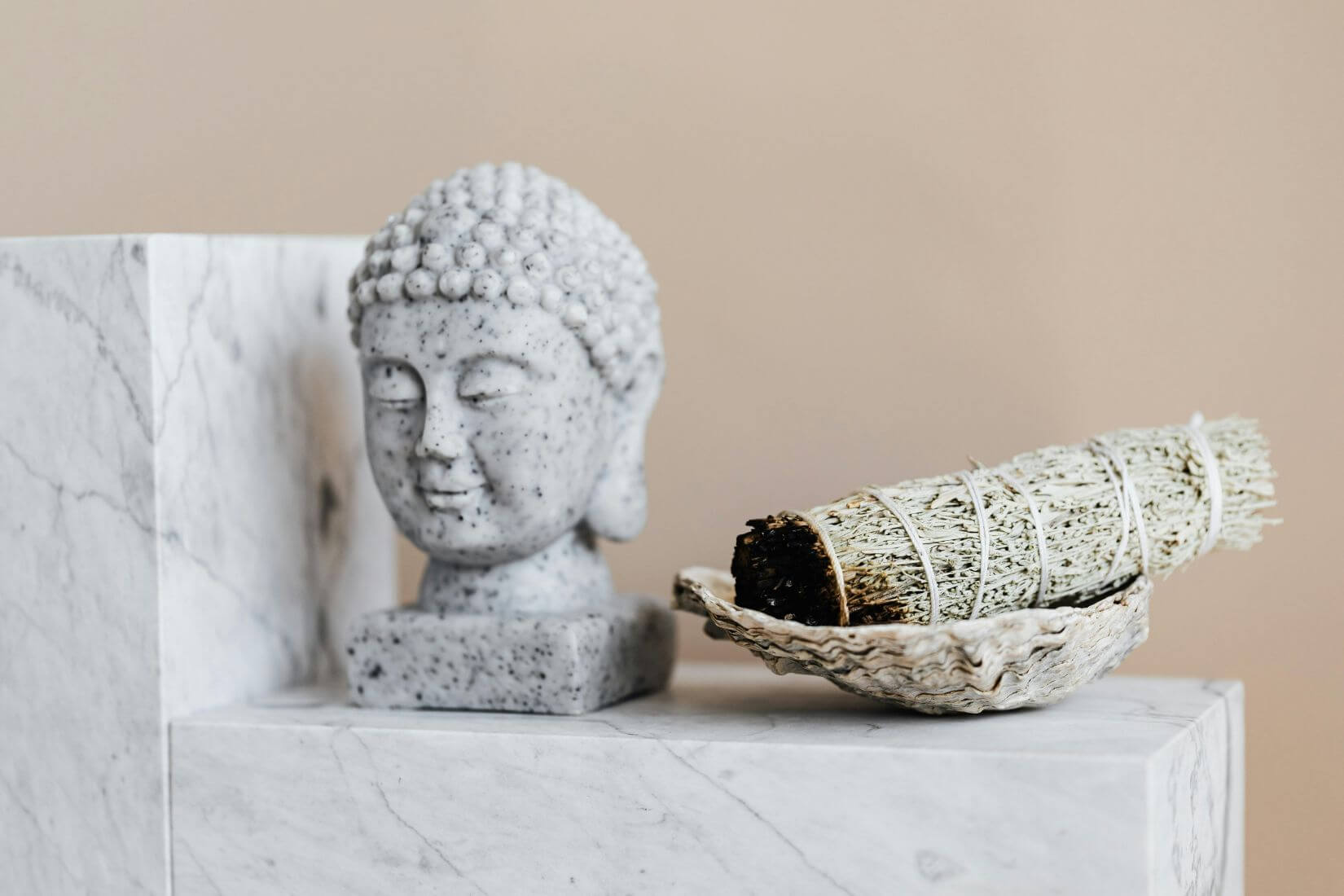5 Mindful Breathing Techniques to Ground Yourself
Is life passing you by? Are you aware of all the little moments you’re missing but you just cannot seem to slow down enough to appreciate them? With everything that’s happening around us 24/7, it’s easy to get into the habit of being overwhelmed, busy, and overstimulated so implementing mindfulness and relaxation practices will do you the world of good.
Mindfulness stretches to virtually every area of your life from exercising to listening and even eating, but one of the ways you can easily ground yourself and get present, that has the most health benefits is mindful breathing techniques.
Mindful breathing is a quick and simple way to bring you back into your body and the moment, helping you relieve stress, increase focus, and boost your overall well-being.
You don’t need any fancy courses or skills to learn how to do it, it’s so easy to get started, so let’s take a look at 5 ways you can practice mindful breathing which you can start today!
But first…
What is Mindful Breathing?
Mindful breathwork techniques are specifically designed to bring your focus to your breath and be aware of what sensations are happening without trying to change anything. It’s a fundamental part of meditation and mindfulness practices which have been used in many different countries for many centuries.
What Benefits Will You See from Mindful Breathing?
Stress and anxiety reliever: Mindful breathing activates your parasympathetic nervous system, which is responsible for lowering your cortisol (stress hormone) levels. It also promotes the “rest and digest” state, which counteracts your “fight or flight”.
Sharp focus and concentration: Mindful breathwork increases blood flow to your brain which improves your cognitive function.
Emotional regulation: Creating a calm mental state by mindful breathing helps you regulate your emotions overall.
Top-quality sleep: A calm body and mind create the perfect state to fall and stay asleep.
Better physical health: The relaxed state that mindful breathing promotes means that you’ll lower your blood pressure and your heart rate in addition to improving lung function.
How Should You Start?
- Firstly, find a quiet and comfortable place.
- Start with smaller sessions to help you get into the swing of it, then gradually increase the duration.
- Be patient and give yourself some grace; it’s completely normal for your mind to wander during breathwork
- And be sure to practice regularly for the best results

5 Mindful Breathing Exercises
1. Belly Breathing (Diaphragmatic Breathing)
This breathwork is used a lot in yoga and meditation practices to improve your breathing efficiency. It boosts your oxygen exchange, relieves stress, and helps you feel relaxed.
What is it?
Rather than taking shallow breaths and breathing into your chest, this exercise focuses on taking deep breaths right down into your diaphragm.
How to do it:
- Sit or lie down in a comfortable position
- Put one hand on your chest and the other on your belly
- Take a deep breath through your nose, feeling your belly rise whilst you keep your chest still
- Breathe out slowly through your mouth feeling your belly fall
2. Relaxing Breath (4-7-8 Breathing)
Inspired by ancient yogic practices, it was developed by Dr Andrew Weil and it helps you to manage anxiety, feel relaxed, and improve your quality of sleep.
What is it?
A simple breathwork technique that helps you control your breath by using a counting pattern.
How to do it:
- Breathe in quietly through your nose for 4 slow counts
- Hold your breath for 7 counts
- Breathe out completely through your mouth for 8 counts
- Repeat it three to four times
3. Box Breathing (Square Breathing)
This breathing technique was popularized by Navy SEALs to improve their performance under pressure. This breathwork pattern improves concentration, relieves stress, and regulates breathing patterns.
What is it?
Used by athletes and military people it helps you to stay calm and focused.
How to do it:
- Breathe in through your nose for 4 counts
- Hold your breath for 4 counts
- Breathe out through your mouth for 4 counts
- Hold your breath for 4 counts
- Repeat several times
4. Alternate Nostril Breathing (Nadi Shodhana)
This practice purifies the mind and body, along with balancing the nervous system, improves mental clarity, and relieves stress. This practice originates in Ayurvedic traditions.
What is it?
A yogic breathing technique using alternate nostrils that balances the mind and body.
How to do it:
- Find a comfy position to sit in and use your right thumb to close your right nostril
- Breathe in deeply through your left nostril
- Close your left nostril with your right ring finger, and release your right nostril
- Breathe out through your right nostril
- Breathe in through your right nostril, close it with your thumb, and breathe out through your left nostril
- Carry on alternating for several breaths
5. Mindful Breathing Meditation
An essential in most meditation practices, mindful breathing meditations increase mindfulness (obv!), relieve stress, and improve your ability to regulate your emotions. It’s included in Buddhism and secular mindfulness programs.
What is it?
Breathing and meditation that is designed to only focus on the breath to create mindfulness.
How to do it:
- Find a comfy position to sit in but make sure your back is straight
- Close your eyes and take some slow deep breaths to relax
- Pay attention to your natural breathing patterns
- Bring your attention to the sensation of your breath coming in and out of the nostrils
- If your mind wanders (which it will! Don’t worry) just bring it back to your breath and keep doing that until you’ve meditated for 5-10 minutes. Or more if you’re enjoying it!
Pin these mindful breathing exercises for later!
Use Mindful Breathing Techniques to Cultivate a Peaceful Life
Breathwork is one of the most simple yet effective tools to help you create a quick sense of peace in your moments of overwhelm.
When the kids are running wild, when there’s too much noise in the office or too many people on the train for your work commute; it can be overwhelming, stressful, and overstimulating but having one or two of these mindful breathing exercises to hand will help you to stop the overwhelm in its tracks and regain calm.
Helping you to improve your mental and physical well-being, there aren’t any reasons why you shouldn’t close your laptop and get to it right now!








